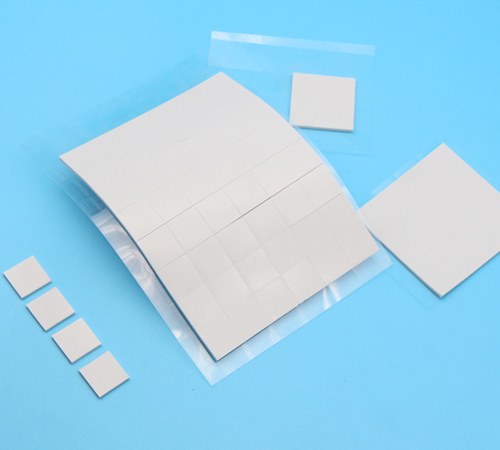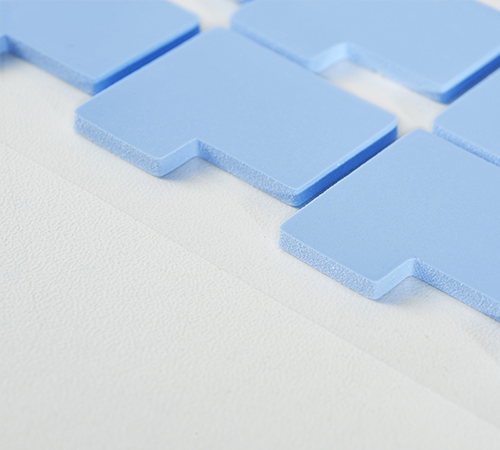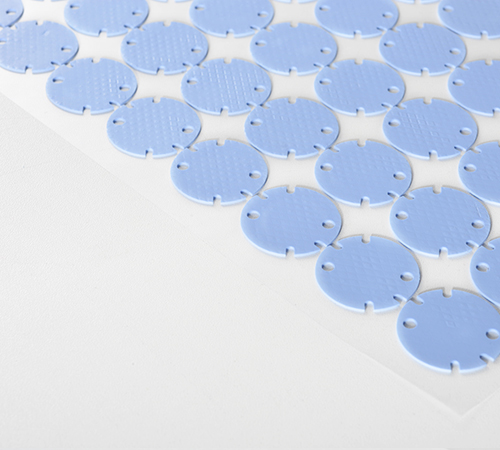Whats the Best Compression Ratio for Silicone Thermal Pads? Full Guide Inside
Author:NFION Thermal Expert
Date:2025-05-29 15:11:40

In thermal management design for electronic devices, silicone thermal pads are widely used thermal interface materials (TIMs). Among their key parameters, the compression ratio is frequently mentioned yet often underestimated. It directly affects thermal conductivity performance, assembly process compatibility, and long-term reliability. So, what exactly does the compression ratio mean, and what is the ideal range to maintain? This article offers a detailed and professional analysis.
What Is the Compression Ratio of Silicone Thermal Pads?
The compression ratio refers to the percentage change in thickness of the silicone thermal pad after compression. It is calculated as:
Compression Ratio = (Original Thickness – Compressed Thickness) / Original Thickness × 100%
This metric reflects the material's compressibility—its compliance and ability to conform under pressure. Different application scenarios and mechanical structures require different levels of compression performance. Too high or too low a ratio can both negatively impact thermal efficiency and structural reliability.
Why Is Compression Ratio Important?
1. Ensures Effective Thermal Contact
Tiny air gaps exist between heat sources (like CPUs or power modules) and heat sinks. If the thermal pad cannot fill these gaps properly, thermal resistance increases significantly. An appropriate compression ratio improves surface contact and reduces interface thermal resistance.
2. Compensates for Tolerances and Assembly Errors
Product designs inherently contain dimensional tolerances. Materials with a good compression ratio can absorb these variations through deformation, improving assembly consistency and reducing mounting stress.
3. Maintains Structural and Long-Term Reliability
Excessive compression may cause pad damage, while too little may result in poor contact or long-term detachment. The right compression ratio ensures a balance between thermal performance and mechanical integrity.
3. Recommended Compression Ratio Ranges
The ideal compression ratio varies depending on factors such as:
● Material type (hardness, filler content, rebound rate)
● Initial thickness (thicker pads allow more compression)
● Applied pressure
● Surface flatness and structural differences
General Recommended Ranges:
|
Original Thickness |
Recommended Compression Ratio |
Compressed Thickness Range |
|
0.5mm |
10%–20% |
0.4–0.45 mm |
|
1.0mm |
20%–30% |
0.7–0.8 mm |
|
2.0mm |
30%–40% |
1.2–1.4 mm |
|
≥3.0 mm |
40%–50% |
1.5–1.8 mm |
⚠ Note: A higher compression ratio is not always better. Overcompression can lead to thermal performance degradation, material cracking, and elastic fatigue.
4. Selection Tips and Considerations
1. Select Based on Application Scenario
For high-power applications requiring low thermal resistance, choose soft, high-conductivity materials and aim for 25%–35% compression.
In structures with limited pressure or irregular contact, opt for ultra-soft pads or thermal gels that allow greater compression.
For vibration-sensitive environments (industrial/automotive), use pads with high resilience and limit compression ratio to ≤40%.
2. Match Design with Assembly Constraints
Designers should consider pad thickness tolerance, available compression space, and screw distances to prevent excessive local stress and pad damage.
3. Account for Long-Term Performance
Evaluate compression set and rebound rate to ensure consistent contact throughout the product lifecycle.
Conclusion: Compression Ratio Is Key to Thermal Efficiency
The compression ratio is not a trivial metric—it is critical for achieving optimal thermal conductivity, structural fit, and durability. For engineers, understanding and properly controlling the compression ratio is a crucial step in improving system thermal performance.
When selecting thermal interface materials, work closely with suppliers to assess thickness, thermal conductivity, hardness, and compression behavior to ensure the best fit for your application.
For more information on silicone thermal pad compression performance, contact Shenzhen Nuofeng Electronic Technology Co., Ltd. for professional one-stop thermal management solutions.
 CN >
CN >



